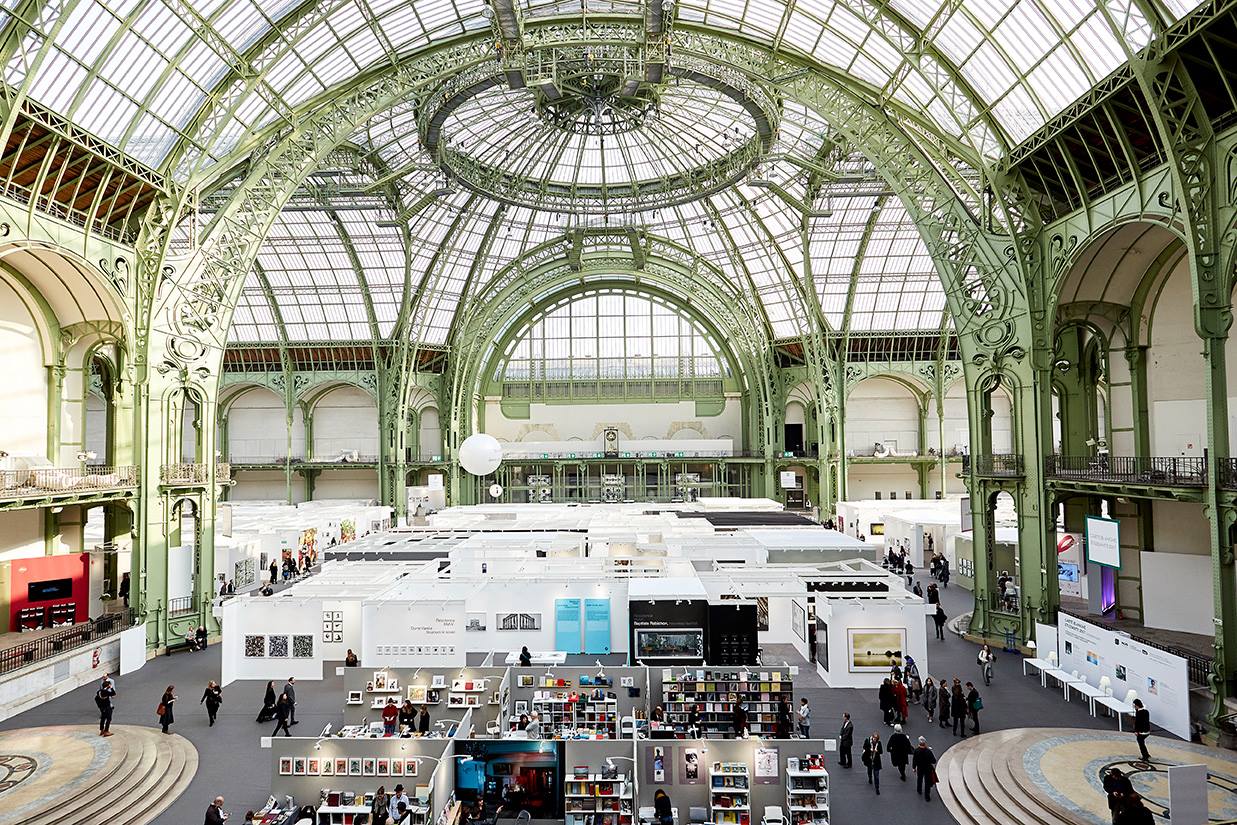
A fair like Paris Photo could not be further from buying a photograph based on a jpg or pdf. Judged by this year’s edition, which closed it doors in the Grand Palais on Sunday, the digital challenge has yet to make much of an inroad in the higher end of the photography market.
Online platforms may seem to offer a low-cost, alternative trading channel, and galleries are developing increasingly sophisticated web presences, but in the photography world Paris Photo remains the fair to see—and be seen.
“Photography collectors love to see the paper, the way it’s printed. Photographers love to come—and collectors love to see the photographers. Yesterday we had Erwin Olaf on the booth. To me, the internet is not really competition,” Magda Danysz told artnet News. The contemporary art dealer with galleries in Paris and Shanghai said: “[The internet] is for small-budget collectors—and I’m not sure it’s cheaper for the galleries. She added that “there are very few contacts that lead to something concrete,” via the internet. “It’s less effective than fairs, at least for the moment.”
Peter MacGill of New York’s Pace/MacGill Gallery said that the online market is growing for the gallery but it comes with a downside. “What is affecting the photo fair market, in fact the photo market in general, is the distribution of information concerning public sales over the internet. On the one hand, this is a superb asset to us all but, on the other, it tends to level out all kinds of material by reducing connoisseurship.” A photograph’s value can be enhanced by—or diminished to—a screen shot, he said. “This doesn’t, in the long term, benefit the market.”
Richard Avedon In Demand
By the time Paris Photo had closed its doors in the Grand Palais on November 11, the fair had attracted nearly 69,000 visitors, over 4,000 people more than last year. They found more booths than last year, up by 10 to 199 dealers and art publishers.
Reported sales included several Richard Avedon portraits offered by the London-based Hamiltons Gallery at prices up to €555,000 ($623,000), and six Robert Frank images of 1950s America sold by Danziger Gallery of New York at prices up to €180,000 ($203,000).Gagosian sold Avedon’s 1969 triptych of Andy Warhol and members of The Factory for €1.5 million ($1.7 million), according to an unconfirmed French press report, The gallery declined to comment.
Other significant sales reported by the organisers, Reed Expositions, included a László Moholy-Nagy photogram, sold by Howard Greenberg Gallery of New York for €220,000 ($250,000), and a 1923 vintage silver print by Edward Weston of Teotihuacan in Mexico, sold by the Parisian gallery Gregory Leroy to a US museum.
James Casebere, Vestibule 2 (2018). Courtesy Galerie Templon, Paris and Brussels.
“Paris Photo attracts a very specific group of collectors and international photo specialists as well as a more diverse crowd of contemporary art collectors, museum-goers, and art lovers,” said Anne-Claudie Coric, executive director of Paris- and Brussels-based Galerie Templon. The gallery showed staged photography work by US artists James Casebere, Gregory Crewsdon, and David LaChapelle, along with works by the French artist Prune Nourry. Templon sold small-format images by LaChapelle at €22,000 ($24,000) and works by Nourry for €23,000 ($25,000). “Art fairs are an essential moment to promote our artists,” Coric said. “Paris Photo is more than just an additional channel of distribution. It’s an annual meeting place to see our collectors, and also museum curators, and critics.”
Meet Me at Paris Photo
At Paris Photo, “You’re pretty sure to meet every collector who is interested in photography,” said Magda Danysz. The fair, which she has attended since 2011, now accounts for about 10 percent of her yearly sales, she revealed.
“You need to be at the fair to meet the new collectors and the people you can’t reach all-year long,” Danysz said. “Paris Photo really is a meeting point. So many foreigners come because the quality of this fair is exceptional.” She said that collectors also come “because it’s so concentrated,” compared with the way photography features at other art fairs. “You get a pretty good idea of what is happening in the photography market,” she added.
William Claxton, John Coltrane, Guggenheim Museum, New York City (1960). Silver gelatine print, printed 2000. Courtesy of Galerie Bene Taschen.
Speaking at the booth of the Paris-based Galerie Camera Obscura, Gregor Beltzig said that Paris Photo is not only an essential meeting place, it accounts for “a big part” of the gallery’s annual turnover. Beltzig, who is also a documentary photographer, is not a great fan of online selling. “The gallery is outside the internet market,” he said. “We have clients from all over the world. We don’t search the internet, and we don’t need it.”
Others take a broader view. “Online is one market and art fairs are another,” said the dealer Bene Taschen, who is based in Cologne. Galerie Bene Taschen also takes part in Art Cologne. “Not everybody goes online. But I like both online and fairs. It’s useful to do both,” Taschen said.